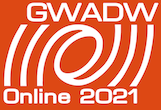Speakers
Description
LISA is a constellation of three spacecraft exchanging laser beams on a 2.5 Mkm triangle. The GW measurement exploits heterodyne interferometric phase measurements of the distance between distant optical benches, with additional interferometers measuring the test mass to optical bench movement, and the optical phase difference of the two lasers onboard the same spacecraft. Stray light (SL) can affect the operations in various ways, but the most obvious perturbation comes from coherent SL being recoupled into one of the interferometers.
We present activities aiming at
- characterizing the re-coupling of SL scattered from a mirror, back into a Michelson interferometer where a collimated beam hits the mirror under test. Back-scatter (BS) from the mirror is measured down to 10^-13 in power
- providing a simple and approximate, yet analytic method to estimate the fraction of BS recoupled into an interferometer: when a complex optics, such as a telescope, is involved, considering only BS rays in the solid angle corresponding to an overlap with the beam waist provides a reasonably precise value of coupled SL
- measuring Rayleigh BS from the "back-link" optical fibre. The back-link allows to prepare the beating of one laser with the other laser on the same spacecraft. We use a heterodyne Mach-Zehnder interferometer to measure BS power in the ppm-level. We also characterize the fibers' reaction to stress and ionizing radiation. Mitigation strategies are presented.

